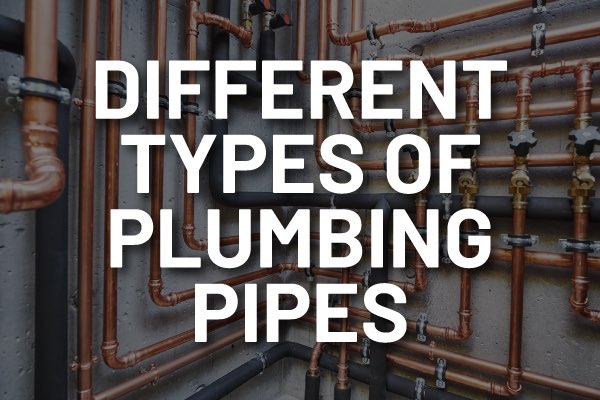
There are several types of plumbing pipes available. The key to getting the right ones for the job — or identifying the ones you already have — is to have a good understanding of how they are different and what they look like. Here’s what you need to know:
PEX Pipes
PEX is an abbreviation for cross-linked polyethylene, the material that makes up this kind of pipe. It’s the newest kind of pipe on the plumbing market and is only used for water supply plumbing. This makes it a good choice for dishwashers, sinks, and hot water heaters.
PEX pipe is strong and durable, so it can withstand varying water pressures. It’s also a very flexible option, which means it can be manipulated into tight spaces more easily. This means the highly flexible pipe is able to handle up to 90-degree curves without restricting water flow. Maneuvering it through ceilings, walls, and basement crawl spaces is generally not hard to do, which makes PEX pipe a popular choice for remodels and new construction homes.
Another reason that PEX pipe is a good fit for most homes is that it’s color-coded for hot and cold water with blue for cold and red for hot. Since you can easily tell which color goes with which water temperature, the pipe can be used successfully and conveniently for many applications. Push-fit plumbing fittings also work with PEX, which just adds to how easy these pipes are to use.
PEX pipes are inexpensive when compared with other types of pipes, and they can be joined up with copper pipes without a problem. That makes them very popular for older homes, which are often retrofitted as people remodel them. They are also easy to cut, so they can be installed at the right size the first time. However, you do need to be aware that some building codes don’t allow for these types of pipes because they are so new. There isn’t enough information and testing about how they age, so they aren’t legal everywhere. They also can’t be recycled, so they aren’t as environmentally friendly as some other options.
PVC Pipes
PVC pipes are made from polyvinyl chloride. These pipes are designed for vent or drain lines. They are light, easy to work with, and easily cut with a miter box or a hacksaw. They can be quickly glued together with solvents which also makes them a popular option in plumbing. Other benefits include clearly marked diameters on their white surface and a relatively cheap cost. They also work well with irrigation systems and are faster to install than copper or steel pipes.
There are a few things that should be kept in mind with PVC. First, they need to be cut to the correct width. They can also be prone to leaking at the connection points if they aren’t installed properly. Additionally, they aren’t good for installations where they’ll be exposed to direct sunlight because the sunlight will break down the material. For these reasons, they’re only good for some applications, and careful thought is needed to consider where they should be installed.
Copper Pipes
Copper pipes are typically used for water supply lines inside a home. These pipes cut easily with a hacksaw or a special copper tube cutter. They are very popular for homes since they don’t cause any negative health risks to the water that flows through them. They work best with soldered connections which should only be done by experienced plumbers. The equipment used for soldering can cause serious injuries if not handled correctly.
Copper pipes have numerous benefits. These pipes handle heat well, and they can also withstand extreme water pressure. They’re recyclable, which cuts down on waste. Finally, they’re worth money, so they can be sold if they’re removed from a home to replace them with newer options. They do, however, need to be installed by someone with experience, and they’re more expensive when compared with other types of plumbing piping typically used today.
ABS Pipes
ABS pipes, or acrylonitrile butadiene styrene pipes in full, are designed to be used for drain and vent lines, just like PVC. In contrast to hard white PVC pipes, these are black and have a softer feel to them. They are also stronger than PVC pipes, and they work very well underground. That makes them a popular choice for exterior plumbing options. ABS pipes aren’t as susceptible to cold temperatures, but they’re also not perfect. For example, they aren’t always permitted by building codes and are susceptible to warping at high temperatures.
Galvanized Steel Pipes
These pipes are no longer used, but it’s important to talk about them because they’re still found in a lot of older homes. They were used for decades for drainage, water supply, gas supply, and any number of other purposes. Today, they’re still used for gas supplies, but they aren’t used for water supply any longer. They can corrode over time which can lead to a blocked water flow. There was also an issue with lead getting into the water supply and making people sick, ultimately causing a shift to other types of pipes.
Need Pipe Replacement or Installation?
If you need to replace the current pipes in your home or install plumbing in your new home build, reach out to our knowledgeable team at HEB Plumbing today. We can help you get the plumbing you need for your home so that you don’t have to worry about water issues anymore. With plumbing services, sprinkler repair, and sewer and drain services, we’re here to provide you with the quality installation and repair you need. Contact our team today for more information or to schedule a consultation.
